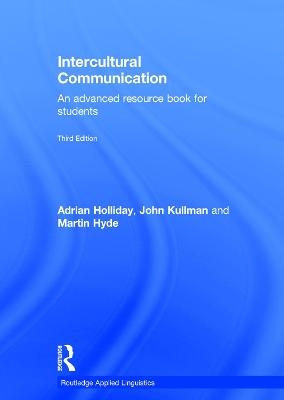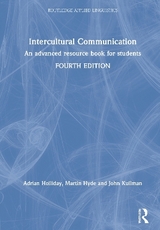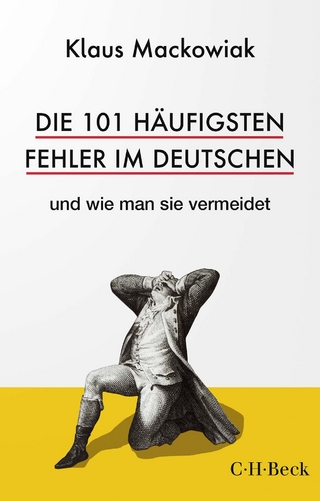
Intercultural Communication
Routledge (Verlag)
978-1-138-18362-9 (ISBN)
- Titel erscheint in neuer Auflage
- Artikel merken
Each book in the series guides readers through three main sections, enabling them to explore and develop major themes within the discipline.
• Section A, Introduction, establishes the key terms and concepts and extends readers’ techniques of analysis through practical application.
• Section B, Extension, brings together influential articles, sets them in context, and discusses their contribution to the field.
• Section C, Exploration, builds on knowledge gained in the first two sections, setting thoughtful tasks around further illustrative material. This enables readers to engage more actively with the subject matter and encourages them to develop their own research responses.
Throughout the book, topics are revisited, extended, interwoven and deconstructed, with the reader’s understanding strengthened by tasks and follow-up questions.
This highly-successful text introduces and explores the dynamic area of intercultural communication, and the updated third edition features:
• new readings by Prue Holmes, Fred Dervin, Lei Guo and Summer Harlow, Miriam Sobré-Denton and Nilaniana Bardham, which reflect the most recentdevelopments in the field
• refreshed and expanded examples and exercises including new material on the world of business, radicalisation and cultural fundamentalism
• extended discussion of topics which include cutting-edge material on cosmopolitanism, immigrants’ intercultural communication and cultural travel
• revised further reading.
Written by experienced teachers and researchers in the field, Intercultural Communication, Third edition provides an essential textbook for advanced students studying this topic.
Adrian Holliday is Professor of Applied Linguistics at Canterbury Christ Church University, UK. John Kullman is a Principal Lecturer in the Department of English and Language Studies at Canterbury Christ Church University, UK. Martin Hyde is Director of Operations for Student Recruitment and Events at PlattForm Education UK.
Introduction
SECTION A: INTRODUCTION – DEFINING CONCEPTS
THEME 1 IDENTITY
Unit A1.1 People like me
Unit A1.2 Artefacts of culture
Unit A1.3 Identity card
THEME 2 ADDRESSING THE OTHER
Unit A2.1 Communication is about not presuming
Unit A2.2 Cultural dealing
Unit A2.3 Power and discourse
THEME 3 REPRESENTATION
Unit A3.1 Cultural refugee
Unit A3.2 Complex images
Unit A3.3 The paradoxes of institutional life
Unit A3.4 Disciplines for intercultural communication
SECTION B: EXTENSION
INTRODUCTION
Unit B0.1 ‘Culture’ and ‘community’ in everyday discourse
Unit B0.2 ‘Culture’ – Definitions and perspectives
Unit B0.3 Current and previous approaches to the study of intercultural communication
THEME 1 IDENTITY
Unit B1.1 Identity as a personal project
Unit B1.2 Globalization, cosmopolitanism and identity
Unit B1.3 Discourse and identity
Unit B1.4 Discourse, identity and intercultural communication
Unit B1.5 Identity and language learning
THEME 2 OTHERING
Unit B2.1 Othering – Focus on Japan
Unit B2.2 Images of the Other
Unit B2.3 Power and the Other in intercultural communication
Unit B2.4 Power and the Other in educational contexts
Unit B2.5 The Other and the tourist gaze
THEME 3 REPRESENTATION
Unit B3.1 The representation of identity: Personality and its social construction
Unit B3.2 Social constructionism and social representations
Unit B3.3 Representation in the media – The case of ‘asylum seekers’
Unit B3.4 Representation of identity online
Unit B3.5 Cultural constructs in business and intercultural training
Unit B3.6 Challenging cultural constructs in intercultural training and ducation
SECTION C: EXPLORATION
THEME 1 IDENTITY
Unit C1.1 The story of the self
Unit C1.2 Becoming the self by defining the Other
Unit C1.3 Undoing cultural fundamentalism
Unit C1.4 Investigating discourse and power
Unit C1.5 Locality and transcendence of locality: Factors in identity formation
THEME 2 OTHERING
Unit C2.1 Othering
Unit C2.2 ‘As you speak, therefore you are’
Unit C2.3 The ‘located’ self
Unit C2.4 Integrating the Other
Unit C2.5 ‘Are you what you are supposed to be?’
THEME 3 REPRESENTATION
Unit C3.1 ‘You are, therefore I am’
Unit C3.2 ‘Schemas’: fixed or flexible?
Unit C3.3 ‘What’s underneath?’
Unit C3.4 ‘Manufacturing the self’
Unit C3.5 ‘Minimal clues lead to big conclusions’
| Erscheinungsdatum | 08.01.2017 |
|---|---|
| Reihe/Serie | Routledge Applied Linguistics |
| Zusatzinfo | 14 Line drawings, black and white; 18 Tables, black and white |
| Verlagsort | London |
| Sprache | englisch |
| Maße | 174 x 246 mm |
| Gewicht | 740 g |
| Themenwelt | Schulbuch / Wörterbuch ► Wörterbuch / Fremdsprachen |
| Geisteswissenschaften ► Sprach- / Literaturwissenschaft ► Sprachwissenschaft | |
| Sozialwissenschaften ► Kommunikation / Medien ► Kommunikationswissenschaft | |
| ISBN-10 | 1-138-18362-8 / 1138183628 |
| ISBN-13 | 978-1-138-18362-9 / 9781138183629 |
| Zustand | Neuware |
| Informationen gemäß Produktsicherheitsverordnung (GPSR) | |
| Haben Sie eine Frage zum Produkt? |
aus dem Bereich



